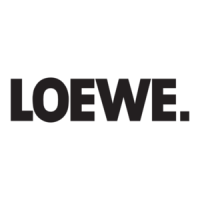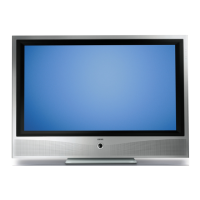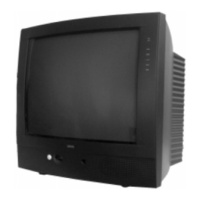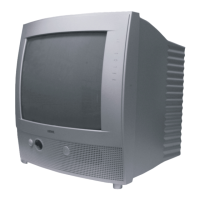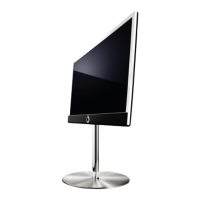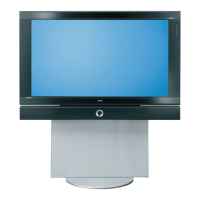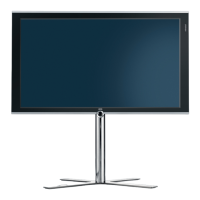How to adjust the picture format on my Loewe Xelos 40 Media?
- TTara KirkSep 10, 2025
If the picture format cannot be adjusted on your Loewe TV, an HbbTV application might be loaded but not active. End the HbbTV application with the END button.
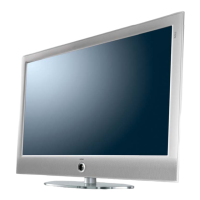
How to adjust the picture format on my Loewe Xelos 40 Media?
If the picture format cannot be adjusted on your Loewe TV, an HbbTV application might be loaded but not active. End the HbbTV application with the END button.
Why are the Loewe Recorder and Timer control functions not working?
If the control functions of the Loewe Recorder and the Timer are not working properly: * Activate Digital Link in the recorder. * Connect EURO-AV cable.
Why was a programmed recording not made on my Loewe Xelos 40 Media?
The stations are exclusively responsible for the transmission of VPS data (for analogue stations) or for the use of the automatic time control (for DVB or MHEG-5 stations). The availability of the appropriate data cannot be guaranteed.
| Response time | 6 ms |
|---|---|
| Display diagonal | 40 \ |
| Display brightness | 450 cd/m² |
| Native aspect ratio | 16:9 |
| Native refresh rate | 100 Hz |
| LED backlighting type | Edge-LED |
| Contrast ratio (dynamic) | 5000000:1 |
| Contrast ratio (typical) | 5000:1 |
| Display diagonal (metric) | 101 cm |
| Screen format adjustments | 4:3, 16:9, Zoom |
| 3D | No |
| Annual energy consumption | 118 kWh |
| Product color | Black |
| Tuner type | Analog & digital |
| Channels quantity | 6000 channels |
| Analog signal format system | NTSC, PAL, SECAM |
| Digital signal format system | DVB-C, DVB-S2, DVB-T |
| RMS rated power | 20 W |
| Number of speakers | 2 |
| HDMI ports quantity | 3 |
| DVI-D ports quantity | 0 |
| SCART ports quantity | 1 |
| USB 2.0 ports quantity | USB 2.0 ports have a data transmission speed of 480 Mbps, and are backwards compatible with USB 1.1 ports. You can connect all kinds of peripheral devices to them. |
| S-Video inputs quantity | - |
| Video formats supported | MPEG, MPEG2, MPEG4 |
| Number of OSD languages | 19 |
| AC input voltage | 220 - 240 V |
| AC input frequency | 50 - 60 Hz |
| Power consumption (typical) | 85 W |
| Depth (with stand) | 267 mm |
|---|---|
| Depth (without stand) | 66 mm |
| Width (without stand) | 984 mm |
| Height (without stand) | 689 mm |
Configures the TV set for TV or Radio operation.
Instructions for switching the TV on/off and entering standby mode.
Steps for tuning into television and radio channels.
Volume control and basic sound adjustments.
Explains the functions of various buttons on the remote control.
Explains the functions and layout of the TV remote control.
Explains the function of buttons on the TV's front panel.
Details all available input/output ports on the TV's rear panel.
Notes on placement and stability requirements for the TV.
Guide for wired and wireless network connections.
Step-by-step setup process for language, region, and channels.
Configuration settings for different digital TV reception types.
Methods for choosing TV and radio channels.
Switching between different input sources.
Controls for volume, sound effects, and audio settings.
Settings for picture quality like contrast, brightness, and sharpness.
Explains colored button functions in TV mode.
Information shown on screen regarding current channel and program.
Finding new or updating existing TV and radio channels.
Operations for organizing channel lists.
Creating and managing personalized favorite channel lists.
How to use and configure the PIP feature.
Using the EPG for program information and recording setup.
Accessing and navigating the Teletext service.
Using the TV for digital radio reception via DVB.
Using the TV for internet radio reception.
Features for accessing media via USB and network.
Accessing and managing media from USB devices and home networks.
Accessing internet content, applications, and web browsing.
Accessing video podcasts sorted by genre or location.
Playing music files from different sources.
Playing video files from different sources.
Using Hybrid Broadcast Broadband Television and interactive Teletext.
Overview of the TV's recording capabilities with external storage.
Methods for recording programs directly to the archive.
Using the time shift feature while recording.
Playing back recorded content from the archive.
Manually descrambling recorded content using a CA module.
Network streaming of recordings between Loewe TVs.
Accessing and configuring settings for external device connections.
Connecting and managing devices via HDMI ports.
Configuring audio output and connected speaker systems.
Process for updating the TV's software via USB.
Solutions for common problems and errors.
Specifications and compatibility information for the TV set.
List of available optional accessories for the TV set.
Information on energy saving and proper disposal of the device.
Definitions of technical terms used in the manual.
Regulatory compliance statement for the product.
